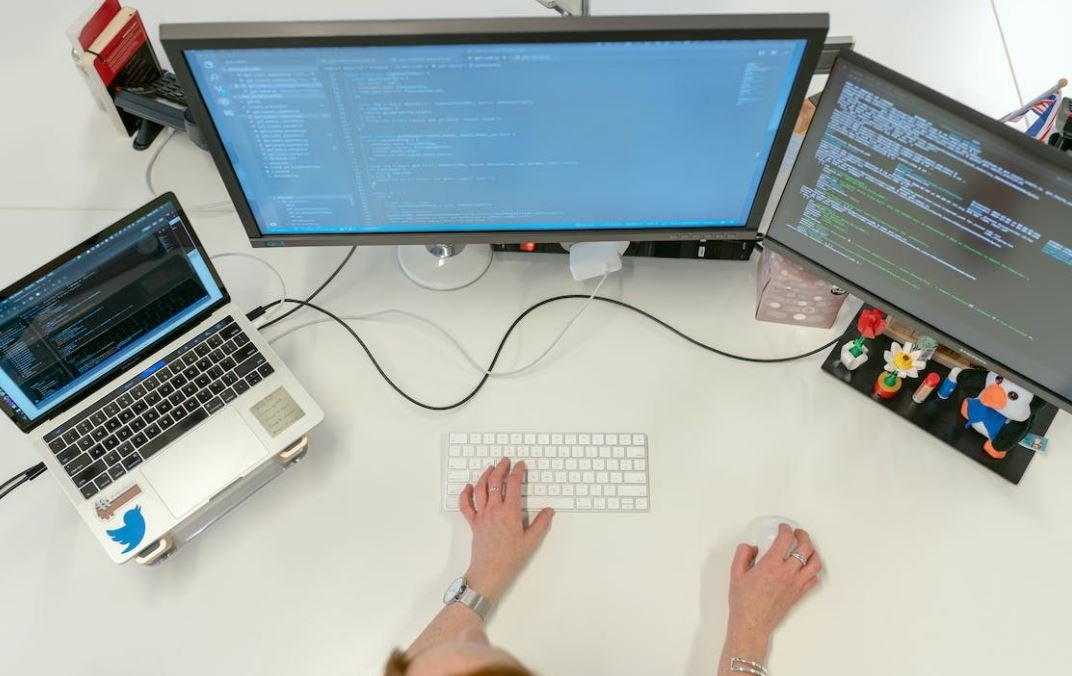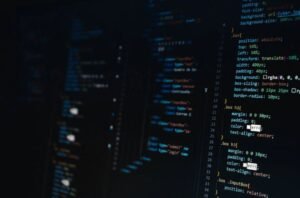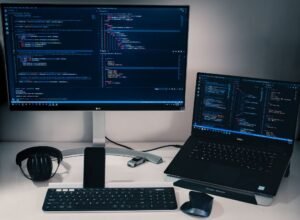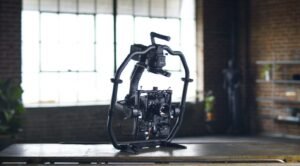Which AI Makes Pictures
Artificial Intelligence (AI) has transformed various industries, and one area where it has shown immense potential is in generating images. With the ability to analyze and synthesize pixel-level details, AI-powered systems can create realistic and visually impressive pictures. In this article, we will explore popular AI models that excel in picture generation, their unique features, and their applications in different domains.
Key Takeaways:
- AI technology can generate pictures with remarkable detail and realism.
- Various AI models specialize in different image generation tasks.
- AI-generated images find applications in photography, design, and entertainment industries.
- Deep learning techniques play a vital role in enabling AI systems to create images from scratch.
The World of AI-Generated Pictures
AI-generated pictures have come a long way, thanks to advancements in deep learning architectures. Generative Adversarial Networks (GANs) such as StyleGAN2 and BigGAN are two notable models that have demonstrated exceptional capabilities in generating high-resolution pictures. These AI models have surpassed the basic interpretation of images and can now produce stunning visuals that experts struggle to differentiate from real photographs.
AI-generated images have fascinating applications in several industries. They can be used by photographers and designers to explore creative possibilities, create prototypes, or enhance visual presentations. Furthermore, AI-generated images find relevance in the entertainment industry for gaming, virtual reality experiences, and special effects creation.
AI Models for Picture Generation
Let’s dive into the exciting world of AI models that make pictures.
1. StyleGAN2
StyleGAN2, developed by NVIDIA, is a cutting-edge GAN model known for its ability to generate highly realistic and diverse images. One of its remarkable features is the fine-grained control it allows over generated images, enabling users to modify specific attributes like hairstyle, eye color, and facial expressions. Researchers have even used StyleGAN2 to manipulate images based on aging, changing gender, or altering the time period depicted.
StyleGAN2 offers users an unprecedented level of customization, pushing the boundaries of what AI-generated images can accomplish.
2. BigGAN
BigGAN, also developed by NVIDIA, is known for its exceptional scalability and the ability to generate high-quality images in a wide variety of categories. By leveraging a large-scale GAN architecture, BigGAN can generate images with stunning detail and fidelity. The model has been trained on a massive dataset, enabling it to produce highly realistic images that vary in style, composition, and color.
BigGAN’s versatility makes it suitable for applications across multiple industries, including art, design, and advertising.
Comparing AI Models
| Model | Key Features |
|---|---|
| StyleGAN2 | Fine-grained control over image attributes |
| BigGAN | Exceptional scalability and high-quality diverse image generation |
Applications of AI-Generated Pictures
Apart from their use in artistic domains, AI-generated pictures offer practical applications in various fields:
- Product Design: AI-generated images help in visualizing and prototyping new product designs, assisting engineers and designers in the creative process.
- Architectural Visualization: AI-generated images can create realistic renderings of architectural designs, aiding architects and clients in visualizing the final construction.
- Virtual Try-On: AI-generated images enable virtual fitting rooms for online shopping, allowing customers to see how clothing items would look on them without trying them on physically.
Conclusion
The world of AI-generated pictures is expanding rapidly, with AI models like StyleGAN2 and BigGAN leading the charge in producing stunning and diverse images. These models have revolutionized image generation and find applications in a wide range of industries. As AI technology advances, we can expect even more exciting developments in the field of AI-driven picture creation.

Which AI Makes Pictures
Common Misconceptions
Paragraph 1
One common misconception about the topic of “Which AI Makes Pictures” is that all AI systems are capable of generating lifelike and high-resolution images. While some AI models, such as DeepArt, DeepDream, and DALL-E, have shown impressive results in generating realistic images, not all AI algorithms have the same level of capability. In fact, many AI-based image generation models struggle to produce accurate and visually appealing images.
- AI-generated images vary widely in quality and realism
- Not all AI systems can achieve high-resolution output
- The effectiveness of AI image generation varies based on the specific algorithm used
Paragraph 2
Another misconception is that AI is solely responsible for the creative process of generating images. While AI algorithms play a significant role in the creation of images, they often rely on human input and expertise to guide and refine the generated results. AI can be used as a tool to assist artists by generating initial concepts or providing inspiration, but it is essential to recognize that human artistic skills and creativity remain integral to the final outcome.
- AI is a tool used to augment human creativity in image generation
- Human input is necessary for refining and enhancing AI-generated images
- AI cannot replace the artistic skills and creativity of human artists
Paragraph 3
Many people mistakenly assume that AI can accurately and reliably generate images from incomplete or low-quality input data. While AI models have made significant advancements in the field of image generation and can sometimes interpolate missing information, they still heavily rely on having access to high-quality and complete data. The limitations of AI algorithms become apparent when attempting to generate images from incomplete or noisy input, leading to inaccurate and flawed results.
- AI image generation is highly reliant on the quality and completeness of input data
- AI struggles to generate accurate images from incomplete or low-quality input
- The output quality is directly influenced by the quality of the input data
Paragraph 4
There is a common misconception that AI-generated images are devoid of bias or subjectivity. AI algorithms are trained on vast amounts of data, often collected from the internet or existing image datasets. Consequently, the biases present in these datasets can be inherited by AI models. This means that AI-generated images may inadvertently perpetuate cultural, racial, or gender biases present in the training data. It is crucial to be mindful of this aspect when considering the objectivity of AI-generated images.
- AI-generated images can reflect biases present in the training data
- Cultural, racial, and gender biases can be inadvertently perpetuated by AI algorithms
- AI image generation should be analyzed critically to identify and mitigate potential biases
Paragraph 5
Lastly, a common misconception is that AI can perfectly replicate and mimic the style of any artist. While AI models can be trained to imitate certain artistic styles, the results are not always indistinguishable from human-created artwork. Factors such as brushstrokes, color choices, and the overall artistic intent are challenging for AI to recreate accurately. The uniqueness and artistic nuances of human artists often remain unparalleled by AI-generated imitations.
- AI’s ability to replicate artistic styles is limited and may not be perfect
- Human artistic nuances are challenging for AI models to recreate faithfully
- AI-generated imitations may lack the depth and authenticity of human-created artwork

Introduction
Artificial intelligence (AI) has revolutionized many industries, including the field of image generation. With advancements in machine learning algorithms, AI-powered systems can now create incredibly realistic and visually stunning images. In this article, we explore various AI models that excel in generating pictures, showcasing their capabilities and achievements.
Table: DeepArt vs. DALL-E
DeepArt and DALL-E are two state-of-the-art AI models that specialize in generating images. DeepArt, developed by Leon Gatys, uses neural networks to create artwork based on user input, while DALL-E, by OpenAI, generates images from textual descriptions. Let’s compare these models:
| AI Model | Key Features | Notable Achievements |
|---|---|---|
| DeepArt | Uses neural networks to generate artwork | Recreation of classic paintings with stunning accuracy |
| DALL-E | Generates images from textual input | Creation of unique and imaginative visuals based on detailed descriptions |
Table: GAN vs. VQ-VAE-2
Generative Adversarial Networks (GANs) and Vector Quantized Variational AutoEncoder 2 (VQ-VAE-2) are prominent AI models known for their image generation capabilities. Here’s a comparison between the two:
| AI Model | Main Technique | Unique Characteristics |
|---|---|---|
| GAN | Uses a generator and discriminator network to generate images | Produces realistic images with exceptional detail |
| VQ-VAE-2 | Combines variational autoencoder with Vector Quantization | Enables high-resolution and diverse image synthesis |
Table: DeepDream vs. StyleGAN
DeepDream and StyleGAN are AI models that leverage deep learning techniques to generate unique and visually appealing images. Let’s explore their characteristics:
| AI Model | Key Aspect | Impressive Features |
|---|---|---|
| DeepDream | Utilizes an algorithm to enhance patterns in existing images | Produces surreal and dream-like visuals with intricate details |
| StyleGAN | Allows control over specific visual styles in generated images | Creates highly realistic and customizable images with exceptional quality |
Table: BigGAN vs. CycleGAN
BigGAN and CycleGAN are prominent AI models known for their advanced image generation capabilities. Take a look at their noteworthy aspects:
| AI Model | Main Focus | Key Achievements |
|---|---|---|
| BigGAN | Focuses on generating high-quality images with fine details | Produces stunning images with unparalleled realism |
| CycleGAN | Specializes in image style transfer and domain adaptation | Enables transformation of images between different styles or domains with remarkable accuracy |
Table: AI Model Comparison
Now, let’s compare all the AI models discussed above to gain a comprehensive understanding of their strengths and specialties:
| AI Model | Image Generation Technique | Main Application | Distinctive Features |
|---|---|---|---|
| DeepArt | Neural networks based on user input | Artistic image generation | Recreates classic paintings |
| DALL-E | Text-to-image generation | Visual representation of textual input | Creates unique and imaginative visuals |
| GAN | Generative adversarial networks | Realistic image synthesis | Offers exceptional detail in generated images |
| VQ-VAE-2 | Variational autoencoder with Vector Quantization | High-resolution and diverse image synthesis | Enables detailed and varied image generation |
| DeepDream | Enhances patterns in existing images | Surreal and intricate image generation | Produces dream-like visuals with intricate details |
| StyleGAN | Control over visual styles in generated images | Highly realistic and customizable image generation | Offers exceptional control and realism in generated images |
| BigGAN | High-quality image generation | Exceptionally realistic image synthesis | Produces stunning images with fine details |
| CycleGAN | Image style transfer and domain adaptation | Transformation of images between different styles or domains | Performs accurate and reliable image transformations |
Conclusion
Artificial intelligence has significantly advanced the field of image generation, providing various AI models with impressive capabilities. From DeepArt’s recreation of classic paintings to StyleGAN’s highly realistic and customizable images, AI systems have demonstrated their ability to produce visually stunning and detailed visuals. As technology continues to evolve, it’s exciting to witness the further development and refinement of AI-powered picture generation techniques.
Frequently Asked Questions
Which AI Makes Pictures
What is AI-generated images?
How do AI algorithms create pictures?
What are the advantages of AI-generated images?
Can AI-generated images replace human artists or designers?
Are AI-generated images legal to use?
Are AI-generated images considered as art?
What are the potential ethical concerns related to AI-generated images?
Can AI-generated images be used for commercial purposes?
Can AI-generated images have artistic value?
What are the current limitations of AI-generated images?




